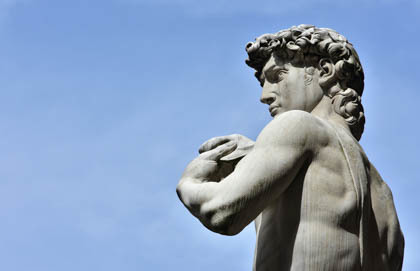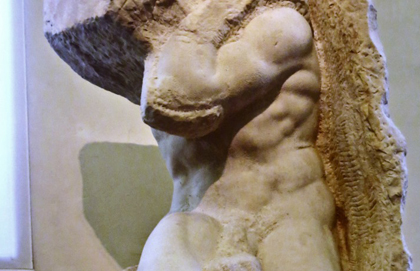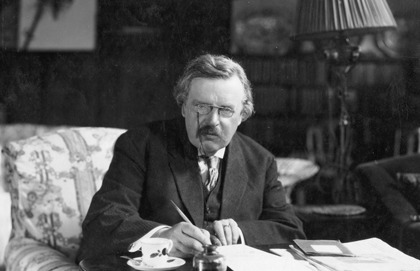Think of great artists like Picasso and Chagall, whose art changed, morphed and evolved over time: the number of canvases painted then destroyed, only to be painted again. Think of Michelangelo and the years he spent perfecting his creations on the ceiling of the Sistine Chapel and sculpting the most magnificent figures. Think of Shakespeare with his infinite creative spirit, his extraordinary perceptions of human nature and behaviour, his exquisite use of the English language. Beethoven, whose desire to create exceptional music from a collection of eight notes never stopped even after he became deaf. There are ballerinas who refuse to stop dancing even when their feet are bleeding. These artists create and recreate as their vision evolves. It is as if they cannot or will not stop their work until they can see that it is good, even very good. It is as if they are compelled to continue until they reach their idea of perfection. Each and every artist creates something from nothing. As all creative artists feel compelled to create and then recreate, imagine God's compulsion to create an extraordinary world, from nothing into something.
There seems to be in us a need to connect to the ephemeral. In our desire to reach up and out to God, we build expansive, exquisite houses of worship in an attempt to embrace the grandness and expansiveness of God. Over the centuries, great architects have designed cathedrals as a way of calling to the Spirit of God to come and dwell within as the Israelites had done in the desert at the "tent of meeting" and as King Solomon had done in the building of the Temple. Many reach up to God and bring Him down to earth though art: from music to poetry, from painting to sculpture.
I had the opportunity to visit Italy this spring and spend time in the Academia in Florence, where some of the great works of Michelangelo di Lodovico Buonarroti Simoni (1475-1564) are displayed. Michelangelo was known to have unyielding faith in God, which is said to have been his motivation for his artistry. As a boy he attended Mass in a local Franciscan church, the Basilica di Santa Croce. It was in this church that he was exposed to frescoes painted by the great artist Giotto while listening to sermons from a Dominican monk, Girolamo Savonarola, who preached against pagan culture and corrupt church practices.
From the time he was a child, he looked to express himself through art. He is quoted as saying, "With my wet nurse's milk, I sucked in the hammer and chisels I use for my statues." At the age of 13 he was invited to live with Lorenzo de'Medici to study painting and sculpture, and to breathe in the great works of art and thought that surrounded him.
Ascanio Condivi, a contemporary biographer, wrote that Michelangelo "loved not only human beauty but universally every beautiful thing: a beautiful horse, a beautiful dog, a beautiful landscape, a beautiful plant, a beautiful mountain, a beautiful wood and every place and thing beautiful and rare after its own kind." Michelangelo saw human beauty as a vessel of God's love; the beautiful body covering the beautiful soul within. It was his passion for beauty that drove him to sculpt.
I look at his work and think that in his love of God, he wanted to imitate Him, walk in His ways, Imitatio Dei, in as many ways as possible in order to express his love and faith in Him. He decided to do this by creating beautiful figures of human beings, created from the natural world, just as God created us from the soil.
"Yahweh God shaped man from the soil of the ground and blew the breath of life into his nostrils, and man became a living being."
—Genesis 2:7
Between 1501 and 1504, Michelangelo created David. Unlike all the other representations of David, where he is depicted as a young boy, a slingshot in one hand, a sword in the other and his foot on the decapitated head of Goliath, this David stands tall, 14 feet tall (excluding the base). He is on the cusp of manhood. Michelangelo created the most perfect David, the young man, from the line of Jesse, who would be King of the Jews. He wanted this David to represent everything that is good in man and carry with him the best qualities, physical and spiritual, of the Renaissance. He is well muscled, like an Adonis. His hair from a distance looks like a laurel upon his head. His hands, the hands that took down Goliath, are large and well formed. His right hand holds the stone gently while the slingshot is slung confidently over his left shoulder. It is his eyes that call to us. They are large, wide open, focused somewhere up and out in the distance, perhaps into the future, filled with an intelligence that belies his years. He has an air of confidence, not arrogance, about him, a sureness. This David resonates strength, not from a sense of might but from the confidence that comes from right; from inner strength, not brute force. This David is a Renaissance man, force tempered by intellect. This David is a moral and ethical young man as would be expected from the House of Jesse.
While David represents Michelangelo's vision of a perfect man, four other statues he started, called the Unfinished Slaves, are in the Academia in Florence. In 1505, Pope Julius II commissioned many works for his tomb. For reasons not always clear, only six statues were started. Two were almost completed: Rebellious Slave and Dying Slave, now on display in the Louvre in Paris. The four less finished sculptures are Awakening Slave, Young Slave, Atlas Slave, and Bearded Slave.
At first, these sculptures are exactly what they appear to be: unfinished symphonies. Yet, looking closer, they begin to take on new meaning, greater significance. Although it may never have been Michelangelo's intent, to me these unfinished marble statues represent the struggle each of us has to free ourselves from the chains of nature as we leave the world of instinct, the world of the gnat, the natural, and move toward the Seraphim, toward the greater development of our human nature, the ability to choose; for that is what separates us from all of God's other creatures.
Allan Bloom in The Closing of the American Mind questioned the modern concept of living in a state of nature without the constructs of religion, country or family. Romanticizing the past comes from deep within our being. The myth of Prometheus tells the story of our deep desire to become one with nature again. Prometheus stole fire from Zeus and brought it to mankind. He suffered terribly for that theft. With this gift, man is no longer solely under the control of the gods and the whim of nature. With fire, he can cook food. He can light up the night, warm himself and live without fear of freezing to death, unlike the animal kingdom, still rooted only in nature. With the advent of fire, we have one foot in the world of nature and one foot in the world of human nature. George Steiner wrote that fire comes to represent "man's cultural break with the natural world, and the deep discomforts that this break has left in our souls." For those of us who believe in God, that break reflects our longing to return to the Source. For others, it is a romanticizing of nature.
Straddling the two worlds requires a balancing act between our amoral animal instincts and the knowledge that we can control our behaviour. Animals act on their instincts. They go with the flow without concern for their actions. They are doers without guilt or shame because there is no such thing as right or wrong. A lion gives chase to a zebra and pounces on it, tearing into its flesh because the lion is hungry and the zebra is there for the taking. There is no concern for the "Other." There is no sense of remorse.
That break with nature leaves us with a feeling of unease, anxiety and angst. Questions and answers become more complex because we have moved beyond the animal kingdom's instinctive responses. There is a constant battle between the natural desires that we hold in common with the animal world and our human moral responses. We are constantly balancing our position between the gnat and the angels. That battle takes place in the gap between instinct and action, where free will holds reign. Human nature requires laws or morals because free will, the ability to control our response to those instincts and drives, needs direction.
"He himself made human beings in the beginning, and then left them free to make their own decisions."
—Ecclesiasticus (Ben Sira) 15:14
The blocks of marble that Michelangelo so carefully chose for his monumental works represent nature. The blocks are without meaning, without form. I imagine Michelangelo choosing a block of marble by envisioning the figure it would be, as if the stone could speak to him, asking the artist to release it from the chains of nature. The marks left on each of the four unfinished works by the hammers and chisels used to refine the figure, to remove the rough spots, shows us the difficulty of creating.
The artist creates something from nothing, attempting to honour God by imitating Him. Michelangelo has the opportunity to begin with a blank slate, a tabula rasa. As he chisels away at the marble, releasing the form within, he modifies and chips away at the flaws to reveal the perfect form that is hidden in the marble. His work as a creator is not that different from the Creator who is constantly trying to perfect us with His tools, His ethical teachings.
In the Awakening Slave, we see a human form that seems to be stretching up and out of the fog of sleep, reclaiming his soul. It is as if he is struggling to escape from the marble, from nature's hold on him. The face is looking up and away as if praying for release. It is as if he were trying to liberate himself from his natural instincts, which hold him back from becoming truly human. We are in a constant struggle against our natural instincts. For some, they become personal demons. I think this desire that we have to return to nature comes from the exhaustion involved in becoming human. It is difficult to fight against our natural and selfish needs and desires. But it is part of the ordeal of civility.
The Young Slave's face is just emerging from the rock, with his arm draped over his face. Like all of Michelangelo's sculptures, the human forms are revealed from the front first, from the middle of the torso, while the rest of the figure remains locked in the marble. The Atlas Slave looks like an unfinished statue of Atlas, holding the troubles of the world up on his shoulders. Here, the figure looks like he is trying to push up and out of the prison of rock, trying to free himself from the hold of his natural instincts. The last of the four Unfinished Slaves is the Bearded Slave. He is the most complete of the four. Only his hands and one arm are still hidden in the marble. Looking back, I wonder if this slave might be a selfportrait of the bearded Michelangelo, almost free of nature's chains, almost perfected but still struggling, always struggling to be better, more human, more compassionate in his desire to imitate God.
Michelangelo worked with his chisels to release his figures from the restraints of nature. It is as if he were carving in stone his personal knowledge of the struggle between natural man and ethical man. He failed with the four Unfinished Slaves. They remain chained to nature, to her whims, her follies. But not David. David is the perfect creation, completely free from nature. He represents what we can all be: fully human beings refined by our Creator through His teachings, exhorting us to be better, to take the time between the impulse and the action to think about our response based on the ethics delivered to us 3,500 years ago.
Michelangelo spent his life glorifying the Church through frescoes, sculptures and architecture. I think his art is his attempt to bring God here with us, to bring Him closer by imitating Him in creation. Like God creating human beings, imagining the figure from within the clay, then giving him the breath of life, Michelangelo looked into a block of marble and saw the human form not yet completed. Just as Michelangelo the artist worked at creating perfection, smoothing the rough edges, so too does God look at us and see the perfection that exists in us waiting to be freed, not with hammers and chisels and files but through our struggle with the ethical teachings He has handed down through the millennia.






